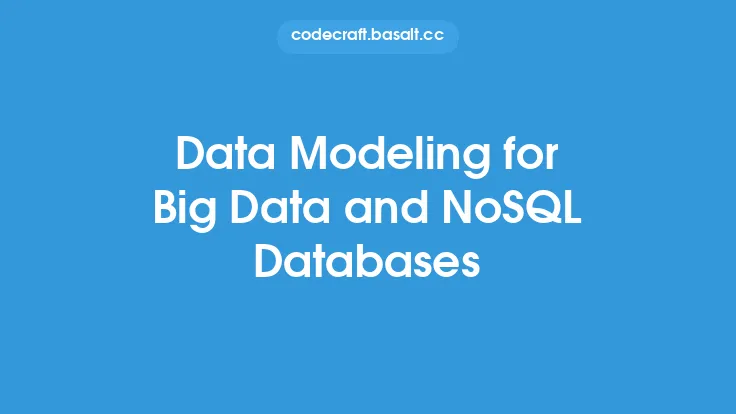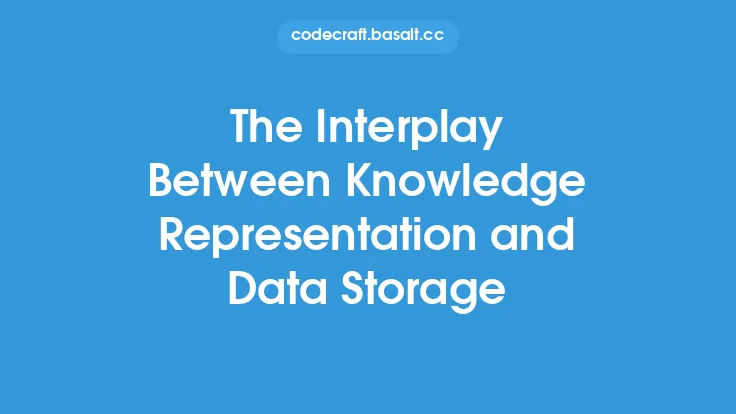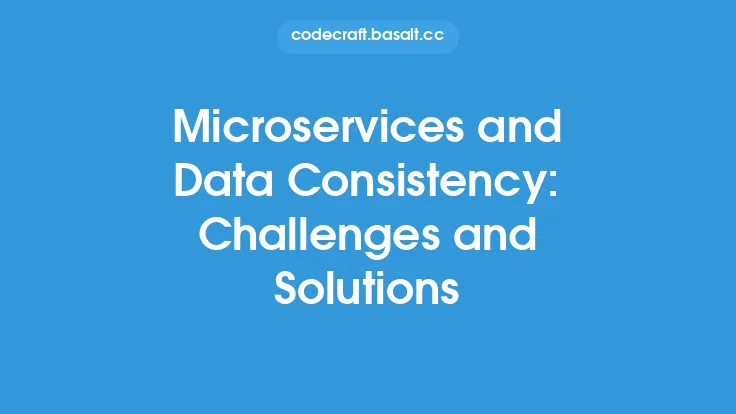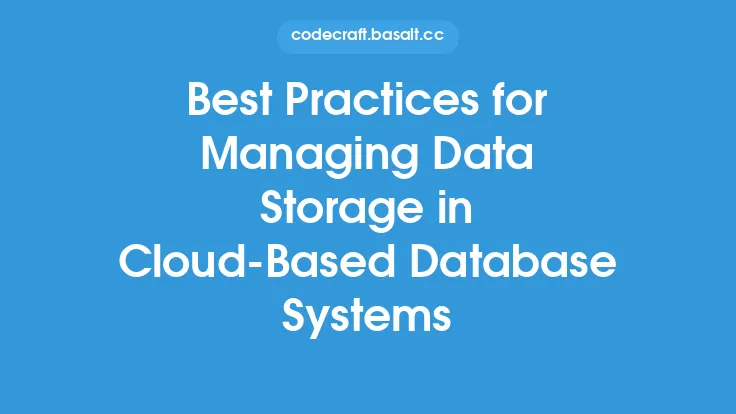The increasing volume, variety, and velocity of data have led to the development of big data and NoSQL databases, which require specialized storage solutions to manage and process large amounts of unstructured and semi-structured data. Traditional relational databases are not designed to handle the scale and complexity of big data, and therefore, new storage solutions have emerged to meet the needs of these modern databases. In this article, we will explore the storage solutions for big data and NoSQL databases, their characteristics, and the benefits they offer.
Introduction to Big Data and NoSQL Databases
Big data refers to the large amounts of structured, semi-structured, and unstructured data that organizations generate and collect from various sources, such as social media, sensors, and mobile devices. NoSQL databases, on the other hand, are designed to store and manage large amounts of unstructured and semi-structured data, which do not fit into the traditional relational database model. NoSQL databases offer flexible schema designs, high scalability, and high performance, making them ideal for big data applications.
Storage Solutions for Big Data
Big data storage solutions are designed to handle large amounts of data and provide high scalability, high performance, and low latency. Some of the popular storage solutions for big data include:
- Distributed file systems, such as Hadoop Distributed File System (HDFS) and GlusterFS, which store data across a cluster of nodes and provide high scalability and fault tolerance.
- Object storage systems, such as Amazon S3 and OpenStack Swift, which store data as objects and provide high scalability and durability.
- NoSQL databases, such as Cassandra and MongoDB, which store data in a flexible schema design and provide high scalability and high performance.
Storage Solutions for NoSQL Databases
NoSQL databases require storage solutions that can handle large amounts of unstructured and semi-structured data and provide high scalability, high performance, and low latency. Some of the popular storage solutions for NoSQL databases include:
- Key-value stores, such as Riak and Redis, which store data as a collection of key-value pairs and provide high performance and low latency.
- Document-oriented databases, such as MongoDB and Couchbase, which store data in a flexible schema design and provide high scalability and high performance.
- Column-family databases, such as Cassandra and HBase, which store data in a column-family format and provide high scalability and high performance.
Characteristics of Storage Solutions for Big Data and NoSQL Databases
Storage solutions for big data and NoSQL databases have several characteristics that distinguish them from traditional storage solutions. Some of these characteristics include:
- Scalability: Storage solutions for big data and NoSQL databases are designed to scale horizontally, which means that they can handle increasing amounts of data by adding more nodes to the cluster.
- Flexibility: Storage solutions for big data and NoSQL databases offer flexible schema designs, which allow for the storage of unstructured and semi-structured data.
- High performance: Storage solutions for big data and NoSQL databases are designed to provide high performance and low latency, which is critical for real-time analytics and processing.
- Fault tolerance: Storage solutions for big data and NoSQL databases are designed to provide high fault tolerance, which means that they can handle node failures and continue to operate without interruption.
Benefits of Storage Solutions for Big Data and NoSQL Databases
Storage solutions for big data and NoSQL databases offer several benefits, including:
- Improved scalability: Storage solutions for big data and NoSQL databases can handle large amounts of data and scale horizontally, which means that they can handle increasing amounts of data without a decrease in performance.
- Increased flexibility: Storage solutions for big data and NoSQL databases offer flexible schema designs, which allow for the storage of unstructured and semi-structured data.
- High performance: Storage solutions for big data and NoSQL databases are designed to provide high performance and low latency, which is critical for real-time analytics and processing.
- Cost-effectiveness: Storage solutions for big data and NoSQL databases are designed to be cost-effective, which means that they can handle large amounts of data without a significant increase in cost.
Technical Considerations for Implementing Storage Solutions for Big Data and NoSQL Databases
Implementing storage solutions for big data and NoSQL databases requires careful consideration of several technical factors, including:
- Data model: The data model is critical in determining the storage solution for big data and NoSQL databases. The data model should be flexible and scalable to handle large amounts of unstructured and semi-structured data.
- Data size: The size of the data is critical in determining the storage solution for big data and NoSQL databases. The storage solution should be able to handle large amounts of data and scale horizontally.
- Data velocity: The velocity of the data is critical in determining the storage solution for big data and NoSQL databases. The storage solution should be able to handle high-velocity data and provide low latency.
- Data variety: The variety of the data is critical in determining the storage solution for big data and NoSQL databases. The storage solution should be able to handle different types of data, including structured, semi-structured, and unstructured data.
Best Practices for Implementing Storage Solutions for Big Data and NoSQL Databases
Implementing storage solutions for big data and NoSQL databases requires careful consideration of several best practices, including:
- Start small: Start with a small pilot project and gradually scale up to a larger implementation.
- Choose the right data model: Choose a data model that is flexible and scalable to handle large amounts of unstructured and semi-structured data.
- Consider data size and velocity: Consider the size and velocity of the data when choosing a storage solution.
- Consider data variety: Consider the variety of the data when choosing a storage solution.
- Monitor and optimize: Monitor the storage solution and optimize it regularly to ensure high performance and low latency.
Conclusion
Storage solutions for big data and NoSQL databases are critical in managing and processing large amounts of unstructured and semi-structured data. These storage solutions offer several benefits, including improved scalability, increased flexibility, high performance, and cost-effectiveness. Implementing storage solutions for big data and NoSQL databases requires careful consideration of several technical factors and best practices, including data model, data size, data velocity, data variety, and monitoring and optimization. By following these best practices and considering the technical factors, organizations can implement storage solutions for big data and NoSQL databases that meet their needs and provide high performance and low latency.





